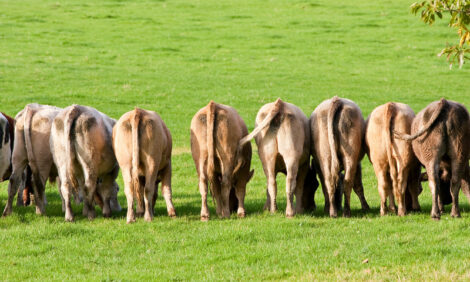



Presence of Phomopsins in Feed & Food
EU - Lupins are the main host for the fungus - Phompsin - with infected stubble being the major source of exposure for animals. Lupin seed is used in food and feed production, but the extent is poorly documented and data on the occurrence of phomopsins in lupin-based foods and feeds are limited. Although information on toxicity of phomopsin is lacking, the severity of toxicities in numerous animal species suggests that human and livestock exposures should be kept as low as possible.A study by the European Food Safety Authority (EFSA) studied phomopsins and its toxic effects on animals.
Phomopsins are a family of mycotoxins produced by the fungus Diaporthe toxica (formerly referred to as Phomopsis leptostromiformis). Lupins are the main host for the fungus. Infection of the plant can result in high levels of phomopsins being present in the stubble, which presents the major source of animal exposure to these toxins.
Infection of lupin seed is usually minimal, but may be affected by environmental conditions, particularly rain. The majority of lupin seed is used in animal feed, but lupin products might also be used for human consumption in the European Union.
Therefore, the presence of phomopsins in lupin and lupin products used for feed and food could be a possible risk for animal and public health. As such, the European Commission asked the European Food Safety Authority (EFSA) to provide a scientific opinion on the risks for animal and human health related to the presence of phomopsins in lupin and lupin products intended for feed and food.
Only limited data on occurrence of phomopsins in feed are available. Quantitative data are only available from Australia and most studies give data only for lupin seeds; only one study includes quantitative data for lupin stubble the most important source for phomopsins causing intoxication in livestock.
Following a call for data by EFSA, no submissions were received and as such it was not possible to undertake an exposure assessment for phomopsins.
Currently five phomopsins have been identified, namely A, B, C, D and E, with phomopsin A being considered the main toxic metabolite of D. toxica.
There is virtually no data available from controlled experimental animal studies on the gastrointestinal absorption, metabolism, tissue distribution and excretion of phomopsins upon which to draw conclusions on the toxicokinetics of these mycotoxins. Phomopsins toxicosis (lupinosis) is recognised primarily as a disease of sheep, but natural outbreaks have also been reported in cattle, goats, donkeys, horses and pigs.
Lupinosis manifests primarily as a hepatotoxicosis in ruminants, and the liver is a major target organ in all species, but the kidney is also significantly targeted. Pigs and horses appeared to be more sensitive to nephrotoxicity than other species.
The mode of action appears to be potent modulation of microtubular function due to high affinity binding of phomopsins to tubulin isotypes. The mechanism that determines liver as the primary target for phomopsins in most species is unknown, but tissue distribution and binding of phomopsins to different tubulin isotypes are possible factors. The mechanism of hepatotoxicity and nephrotoxicity associated with abnormal microtubular function suggests direct relevance to human disease.
The absence of dose-response information on toxicities associated with phomopsins or exposure/occurrence information precludes an assessment of risks for either humans or livestock. However, the severity of effects on liver and its generality among animal species suggest that human and livestock exposures should be kept as low as possible.
The EFSA Panel on Contaminants in the Food Chain concluded that, before meaningful progress can be made, validated analytical methods for the identification and quantification of the major toxic phomopsin congeners in foodstuffs, livestock feeds, and fluids/tissues from dosed animals must be developed.
In addition, data on the presence of lupin-based foods and feeds, the extent of consumption by European populations and livestock, and contamination by phomopsins need to be collected.
TheCattleSite News Desk


